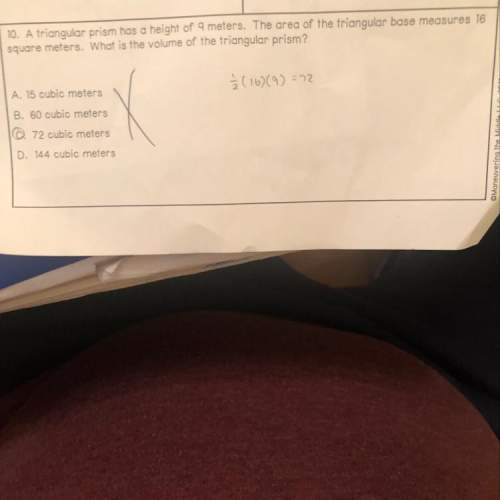
Mathematics, 31.12.2019 05:31 elijahmoore841
Find the potential of the vector field f~ (x, y, z) = e xy/z (1 + xy z )~i + x 2 z ~j − x 2y z 2 ~k , and use the fundamental theorem for line integrals to evaluate z c f~ · d~r, where c is the straight line segment from (1, 1, 1) to (2, 2, 1). can one choose an arbitrary piece-wise smooth curve c with initial point (1, 1, 1) and terminal point (2, 2, 1) instead of the straight line segment?

Answers: 2


Another question on Mathematics

Mathematics, 21.06.2019 15:30
Asquare is dilated by a scale factor of 1.25 to create a new square. how does the area of the new square compare with the area of the original square? a)the area of the new square is 1.25 times the area of the original square. b)the area of the new square is 2.50 times the area of the original square. c)the area of the new square is 1.252 times the area of the original square. d)the area of the new square is 1.253 times the area of the original square.
Answers: 1

Mathematics, 21.06.2019 18:30
The base of a triangle exceeds the height by 9 inches. if the area is 180 square inches, find the length of the base and the height of the triangle.
Answers: 1

Mathematics, 21.06.2019 23:30
Sally deposited money into a savings account paying 4% simple interest per year.the first year,she earned $75 in interest.how much interest will she earn during the following year?
Answers: 2

You know the right answer?
Find the potential of the vector field f~ (x, y, z) = e xy/z (1 + xy z )~i + x 2 z ~j − x 2y z 2 ~k...
Questions

Chemistry, 04.08.2019 00:30

Biology, 04.08.2019 00:30

Biology, 04.08.2019 00:30

History, 04.08.2019 00:30










Computers and Technology, 04.08.2019 00:30

History, 04.08.2019 00:30

Chemistry, 04.08.2019 00:30

Business, 04.08.2019 00:30

Biology, 04.08.2019 00:30

History, 04.08.2019 00:30





